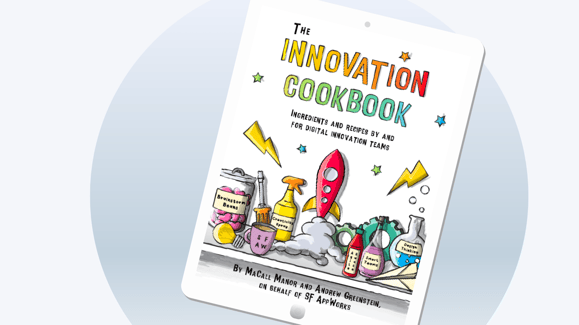Real innovation can feel like an elusive shape-shifter, dazzling us unexpectedly in a kaleidoscopic unfurling of its wings before quickly disappearing into the darkness. What works brilliantly in one situation doesn't always succeed in the next, giving the concept a mysterious air. It's tricky to nail down a singular, tried-and-true formula from all the different models of innovation, but fortunately, some experts have attempted, giving us a lot to sift through.
Looking for more ways to evolve your business? Check out SF AppWorks today!
HOW TO CHOOSE FROM DIFFERENT MODELS OF INNOVATION?
Two-Headed
Not to be confused with its more famed predecessor, innovation flows from the invention. It does not equal but improves its parent.
If you're interested in the field, you might already know the difference between incremental and disruptive innovation.The former builds by slow improvement on existing structures, responding to customer or market demands in calculated, measurable phases. ''Disruptive innovation,'' on the other hand, coined by ~Innovation Godfather~ Clayton Christensen, refers to an innovation that acts not only on the product but also on its entire value network and market. Disruptive innovation might have all the bells and whistles, but both types of innovation are essential. Often, one cannot exist without the other.
Evolved
Chronologically, there's been a transition from linear to dynamic models of innovation. The outdated linear models were typically driven by only two forces: a technology push and consumer demand/need pull. Newer dynamic models of design are multidimensional, emphasizing systems integration, and the immutable power of networks.
Related: What is Rapid Prototyping
So, here are a few dynamic ways to think about innovation.
INNOVATION EXPANSION MODELS
“Connect and Develop” Model | Open Innovation
There are some key points to take away from Procter & Gamble, an empire that has undoubtedly withstood time and adaptability tests.
In the pursuit of progress, R&D isn't anything profound. So why have so many firms failed to age gracefully, despite having responsibly poured heaps of their sales revenue back into research and development for new products? Clayton Christensen highlights that most models fail to account for the long-term trajectories of new "fringe" markets and over-focus on optimizing for their established audience.
While these systems are highly competent in picking up on existing user needs, they're missing a train they didn't even know they should be on.
Procter & Gamble takes a different approach. According to its former VP of Corporate Research and Development, networks are a powerful catalyst in innovation. Procter & Gamble reinvented R&D, shifting the phrase to ''Connect and Develop'' and sourcing the bulk of its ideas from outside the company. Says Nabil Sakkab, ''The future of R&D is C&D—collaborative networks that are in touch with the 99% of research that we don't do ourselves. P&G plans to keep leading innovation, and this strategy is crucial for our future growth.''
Another term used to describe this model is "open innovation," a paradigm originally outlined by Henry Chesbrough, organizational theorist, and director of the Garwood Center for Corporate Innovation. He defines open innovation as ''the use of purposive inflows and outflows of knowledge to accelerate internal i expand the markets for external use of innovation, respectively.'' Open innovation is an entire school of thought. It takes dynamic models a step further in a bold counter that defies the vertical integration approach.
“Dual Operating Systems” Model
One reasonably intuitive obstacle in innovation is: how do you keep up? Technology mutates so fast that landing a solid foothold in any one sector can feel overly ambitious at best. John Kotter, a Harvard Business School professor and expert on change, suggests ramping up your motorcycle with a sidecar.
He argues that while hierarchical structures and organizational management practices begin to show wear and tear, we still need them to keep the logistical demands in check. That being said, the key is a second operating system, ''devoted to the design and implementation of strategy, that uses an agile, network-like structure and a very different set of processes.'' This parallel operating system moves with speed, agility, and creativity—something altogether different than its hierarchical counterpart. Kotter proposes that these systems would operate ''in concert,'' each enhancing the other, both driving innovation.
Agile Development Model | Rapid Prototyping
Perhaps the best innovation model for tackling efficiency, the agile development model, uses rapid prototyping to explore possibilities swiftly. Popularized in The Lean Startup movement circa 2012 by Eric Ries, agile methodology is an antidote to software development's inherent unpredictability. It emphasizes quick, iterative developmental cycles with minimal feature sets; solutions can be built to understand a particular platform's strengths and weaknesses before developing a final product.
At SF AppWorks, rapid prototyping is at the core of our methodology. We've used it to deliver exceptional products to our Fortune 500 clients for the last ten years. Connect with us to talk about how we can use it in building tools for your business.
Vijay Govindarajan, a distinguished Professor at Dartmouth and leading expert on strategy and innovation, also advocates for these quick iterations—a fail fast to grow fast approach. In his book "The Three Box Solution to Managing Innovation," he traverses past, present, and future to deconstruct innovation and introduce a framework for achieving it.
TYPES OF INNOVATION
A common assumption people make is that an organization is either innovative or not. This black and white approach doesn't account for the different kinds of innovation an organization can pursue, and the fact that there isn't just one correct way to innovate. Since there are as many different classifications and typologies as authors on innovation, the classifications below are based on the most common terms and how to relate to each other.
Disruptive vs. Sustaining Innovation
Introduced by Clayton Christenson in 1995, disruptive innovation is defined as a concept, product, or service that creates a new value network through disrupting an existing market or generating a novel demand. Typically, disruptive innovation offers lower performance at the start of the life cycle of an innovation. Although these kinds of innovations are often not "good enough" to satisfy current customers, they appeal to an entirely new market.
For example, a transistor radio initially offered worse sound quality than the larger existing radios. While a typical customer in that era wasn't interested in a lighter radio, it appealed to young travelers who wanted to bring music to the beach. With the improvement of sound quality, a portable radio eventually displaced the heavier, bulky analogue radios. On the other hand, sustaining innovation tends to cater to an existing market. Rather than creating new value networks, it improves and expands the current ones. Nearly all microwaves can be considered to be sustaining innovations. When we examine the original microwave in comparison to the microwaves of today, we see that the basic functions have remained essentially the same. Sustainable innovation only slightly evolves with each iteration, continuing to meet the needs of a typical microwave purchaser.
Watch this dramatization on situations when businesses don’t use rapid prototyping:
Radical Vs. Incremental Innovation
Sustaining and disruptive innovation can both be either radical or incremental. Radical innovation occurs with the disruption of existing business or economy by a new technology, forming a new business model. This is extremely difficult to execute, which is why only about 10% of innovations fall into this category. Incremental innovation refers to a series of small, gradually built improvements to products, processes, or methods which already exist, in order to continue market dominance as time goes on. Most innovations are incremental, as they are typically the simplest and most cost-efficient to implement.
Get a Free Copy of "The Innovation Cookbook"

Innovation Matrix
The four terms discuss above can be understood through the Innovation Matrix:
- Radically disruptive- Innovation that utilizes new technology and starts a new business mode, without any immediate competitors
- Radically sustaining- Improvement on a product or process in an existing market that offers new value for the customer
- Incrementally disruptive- Small steps in technology that lead to significant disruption
- Incrementally sustaining- Small changes in an existing product, technology, or service which accumulate.
Looking for ways to develop your idea? Call SF AppWorks today!
Architectural Vs. Modular Innovation
Introduced by Rebecca Henderson and Kim Clark in 1990, architectural innovation refers to the reconfiguration of existing product technologies. Architectural innovations are based on the point that while the essential factors of the product stay the same, the relationship between these factors shifts. On the other side of things, in modular innovation (or component innovation) one or more components of a product is changed while the overall design remains the same.
MODELS OF INNOVATION. CLOSING THOUGHTS
These are just a few angles from which to explore innovation. Innovation evolves, redefines, restructures, and completely reinvents itself even with each passing year. That's why we find it fascinating—striving to attain it is only human. If you want to talk more about it, we'd love to. Reach out to us, and remember to keep moving forward.
Related: Everything You Need to Know About The Agile Software Development Life Cycle




COMMENTS